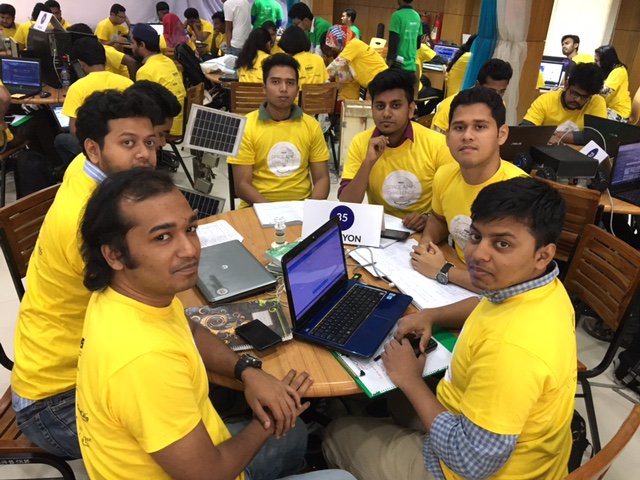PROCYON | You are my Sunshine
The Challenge | You are my Sunshine
Multilevel dual axis Sun tracking solar tracker
Multi-Level Dual axis sun tracking system has more potential than any other system used for solar energy, in terms of both efficiency and cost minimization.

Consumption of fossil fuel hasincreased dramatically due to the rapid technological development and population growth of the world. This limitation of fossil fuel has ledpeople to look for renewable energy sources. Among all the sources, solar energy has a remarkable potential of producing electrical energy and also make it cost effective. As of we learned from NASA Earth Science Data, the output of the solar cells efficiency depends on the radiation of sun light and the angle of incident rays from the sun. But, due to earth’s rotation, the panels can’t always maintain their position in front of the sun. Existing solutions for this problem are solar trackers. Dual axis trackers are better than single axis tracker because of more flexibility and improved efficiency. But there is lot to improve in this sector. Our project is based on the design and implementation of multi-level dual axis automatic sun tracking system. Normally existing dual axis trackers can carry single panels but this structure can carry multiple panels and track easily suns altitude and azimuth movement. It also requires less servo than normal dual axis systems. For example, In this system, we used only four LDRs required to measure the light intensity for the rotation of the panel in both horizontal and vertical axis. Whereas 12 LDRs are required for four single panel duel axis sun tracking system so more values more errors. Moreover, the structural design of the system will allow rotating the four panels with five servo motors whereas normal dual axis needs eight servo for its operation and it also needs mor space than our system. This reduction of LDRs and motors will reduce the cost of the system, hence makes the system efficient, cost effective and simple. We also found out that its efficiency is higher than normal dual axis tracker's efficiency. Servo motors are used for rotating the panels and LDRs are used as sensors to detect the maximum intensity of the light. Multi-Level Dual axis sun tracking system has more potential than any other system used for solar energy, in terms of both efficiency and cost minimization.
Light dependent resistors are not always perfect so for improve the efficiency we can take sun's real time location data from NASA and Move the panels to exact direction. We can also take Weather forecast, temperatures, humidity, sun radiation data to calculate solar panel's efficiency for next few days and predict how much power can be generated in that time. This predictions can be used for many purposes like sharing left over energy with others.
SpaceApps is a NASA incubator innovation program.